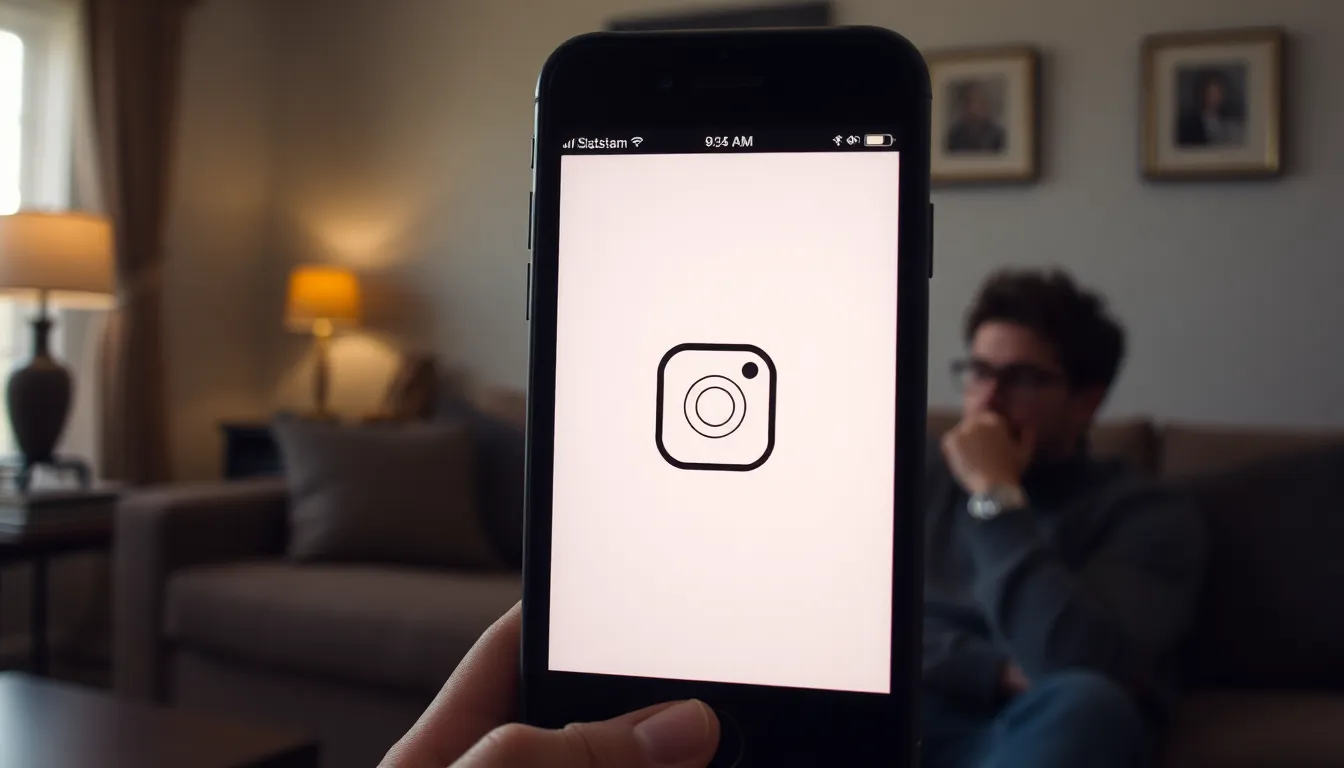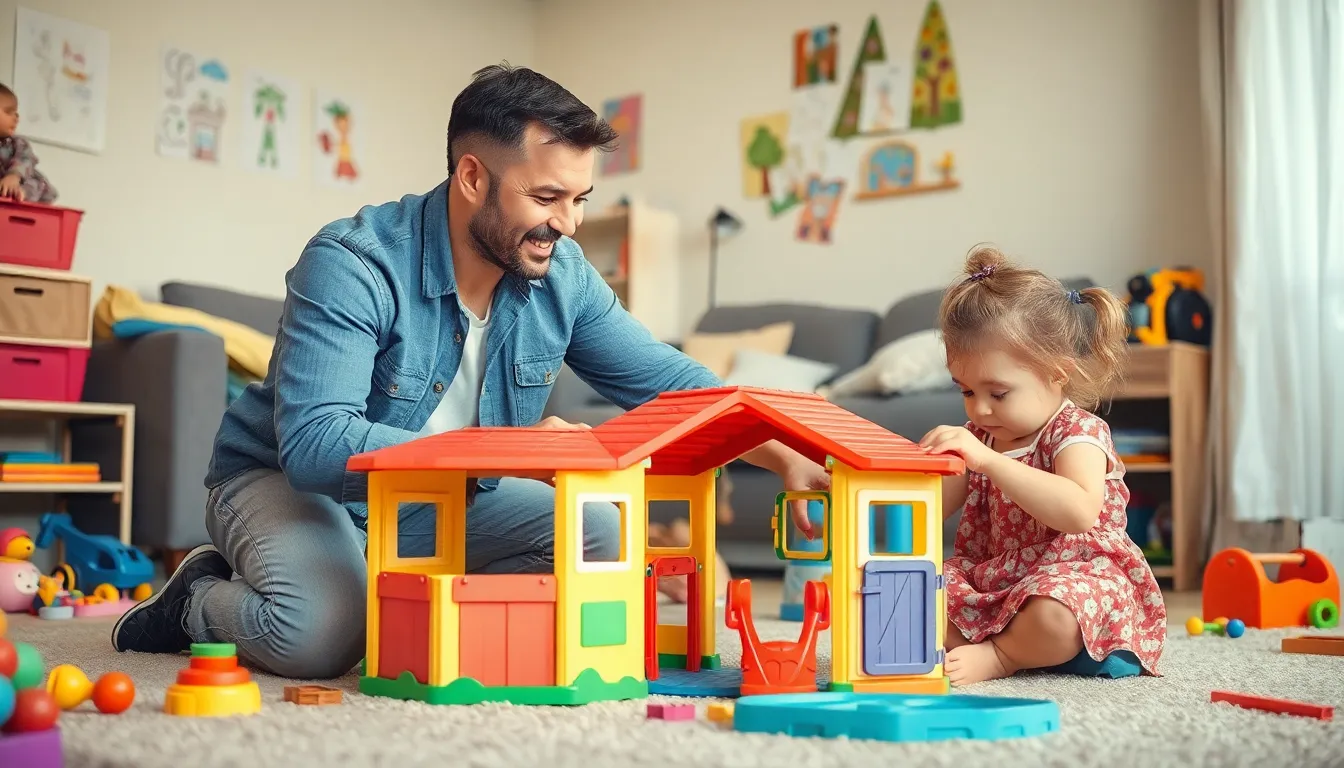Ever thought about hitting the delete button on Instagram? Before you do, let’s explore what really happens when you bid adieu to that little camera icon. It might feel like a leap into the unknown, but don’t worry; it’s not like jumping into a shark tank—more like stepping into a cozy hammock.
When someone deletes the app, they might think they’re just saying goodbye to endless scrolling and influencer envy. But what about the likes, the DMs, and those perfectly filtered brunch pics? Life without Instagram could be a wild ride, full of unexpected twists. Get ready to discover the pros and cons of this digital detox, and maybe even find out if you can survive without that daily dose of curated perfection.
Table of Contents
ToggleOverview of Instagram App Usage
Instagram serves as a pivotal platform for social interaction, where users share photos and videos. Daily, millions engage with friends and influencers through likes and comments. User engagement often centers around exploring curated content that highlights lifestyles, fashion, and travel.
Notifications play a significant role in keeping users connected. Alerts about likes, new messages, and follower updates encourage constant interaction. This cycle of engagement fosters a sense of community, but it can lead to addictive behaviors.
Privacy concerns also arise with app usage. Personal data gets collected, allowing targeted advertising but raising questions about user security. Users must be aware of their privacy settings to manage their online footprint.
The app offers features like Stories and IGTV, promoting versatile content sharing. Stories allow users to share moments throughout the day, while IGTV provides a platform for longer videos. These features enhance the overall experience, making Instagram more than just a photo-sharing platform.
Overall usage can lead to both positive and negative experiences. While it enhances connections, it can also foster unrealistic comparisons and anxiety. Users often find themselves grappling with the desire for validation through likes and followers.
Engaging with the app involves balancing these aspects. Users should consider how Instagram affects their mental well-being. Periodically stepping away can provide clarity and help reassess its role in daily life. Understanding the dynamics of the platform equips users to navigate their social media experience more effectively.
What Happens When You Delete the App

Deleting the Instagram app results in a range of outcomes, depending on the type of deletion chosen. Users often consider their options carefully before making a decision.
Temporary Deletion vs. Permanent Deletion
Temporary deletion allows users to take a break without losing their account and data. Upon reinstallation, the app restores previous content, enabling continuity. In contrast, permanent deletion removes the account and all associated data entirely. Choosing permanent deletion leads to the loss of followers, posts, and messages, with no recovery possible. Users should weigh their options based on their goals before opting to delete the app.
Effects on Your Account and Data
When deleting the app, the account remains accessible through a web browser until further action occurs. Users still receive notifications regarding likes and messages even after deletion. The delete process maintains personal data for 30 days before complete removal occurs. Privacy settings remain intact, ensuring that data aligns with Instagram’s guidelines. Post-deletion, there’s no chance of account recovery for permanent deletions. Awareness of these effects helps users make informed decisions about their social media presence.
Impact on Your Social Connections
Deleting the Instagram app significantly affects social connections. Users face different outcomes, impacting engagement and communication.
Losing Followers and Engagement
Followers may drift away quickly after deleting Instagram. Engagement drops as likes and comments cease, leading to a diminished online presence. Friends and acquaintances notice the absence, resulting in indirect relationships. Many users rely on Instagram for updates and connection. This reliance creates a gap, making it harder for others to stay informed about personal milestones and daily activities. Content creators especially experience a setback in audience reach, with decreased visibility affecting their brand presence. Ultimately, the decision to delete correlates directly with the likelihood of losing followers and experiencing reduced engagement.
Communication Gaps with Friends
Deleting the app introduces noticeable communication gaps. Users often rely on Instagram’s direct messaging feature for quick conversations. Without it, friends may struggle to connect through other platforms. Regular updates shared through stories or posts become non-existent, leading to missed moments in each other’s lives. Friends may feel disconnected without visual content to facilitate discussions. Conversations may require more effort as users shift to traditional messaging or calls. Maintaining connections might require a renewed commitment to other communication methods. As a result, social bonds can weaken without the familiar framework of Instagram’s instant updates and messaging capabilities.
Alternative Options to Deleting
Consider alternatives before opting to delete the Instagram app. Users can maintain social connections while reassessing their app usage through various methods.
Deactivating Your Account
Deactivation offers a temporary solution. Users can hide their profiles without losing data. This option prevents others from seeing posts and interacting with the account. To restore access, a simple login reactivates the profile. This provides a break while retaining followers and data, making re-engagement seamless.
Using App Limits and Notifications
App limits serve as a practical alternative to deletion. Setting daily time restrictions can help curb usage. Notifications can also be customized to reduce distractions. Users may turn off alerts for likes or messages, minimizing the temptation to check the app constantly. Monitoring time spent on Instagram fosters mindful usage, allowing re-evaluation of its impact on daily life.
Deleting the Instagram app can lead to a significant shift in one’s social media experience. While it may seem daunting to step away from a platform that fosters connection and creativity, the potential benefits of a break can be profound. Users might find more time for personal interests and face-to-face interactions that enrich their lives.
However it’s essential to consider the impact on social connections. Friends and followers may notice the absence, and communication could shift to other platforms. Exploring alternatives like deactivating the account or setting app limits can provide a balanced approach. Ultimately the decision to delete Instagram should align with individual priorities and well-being.







